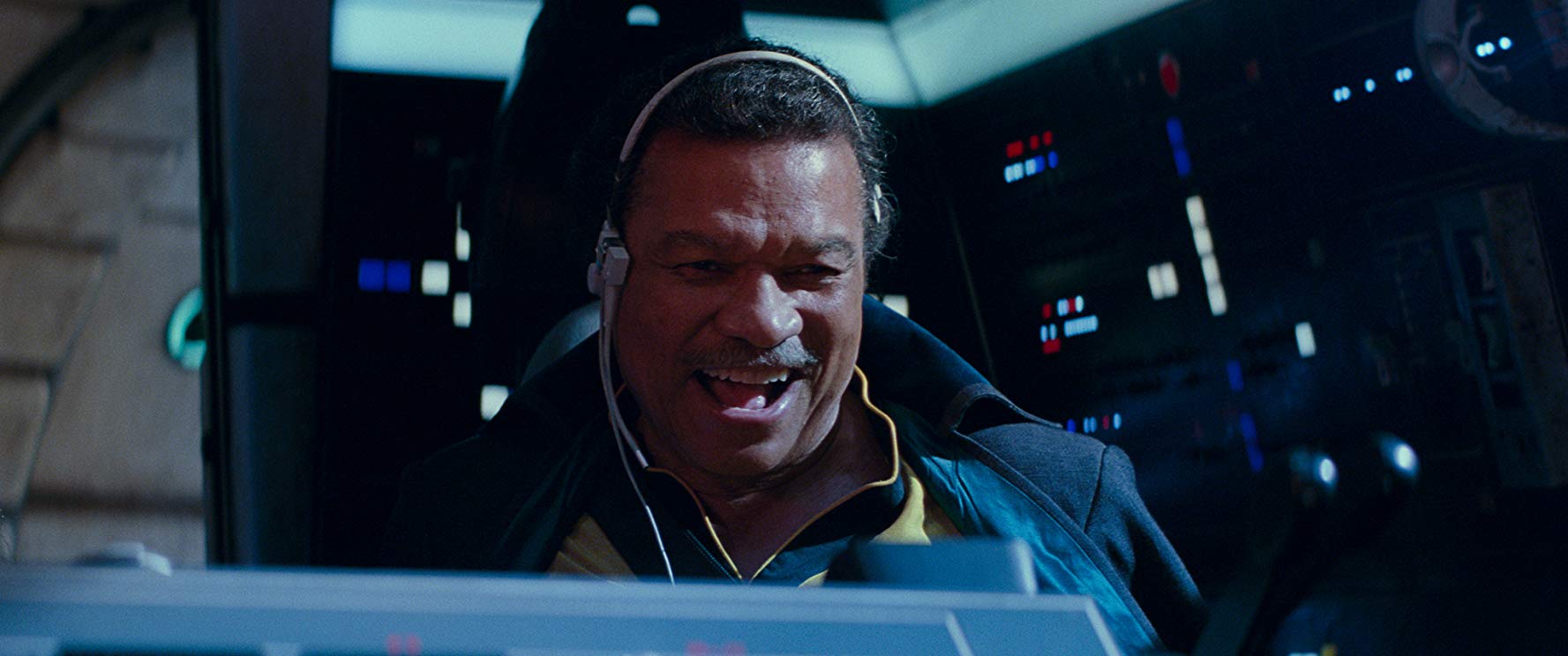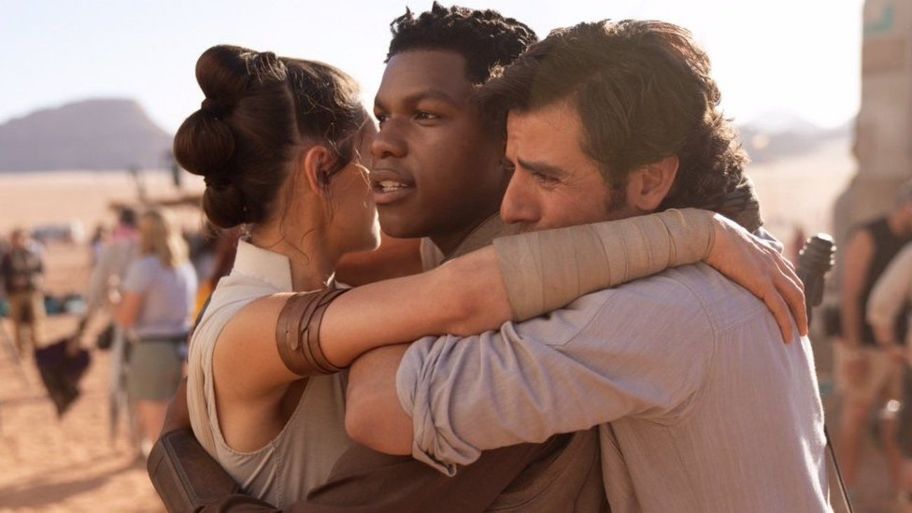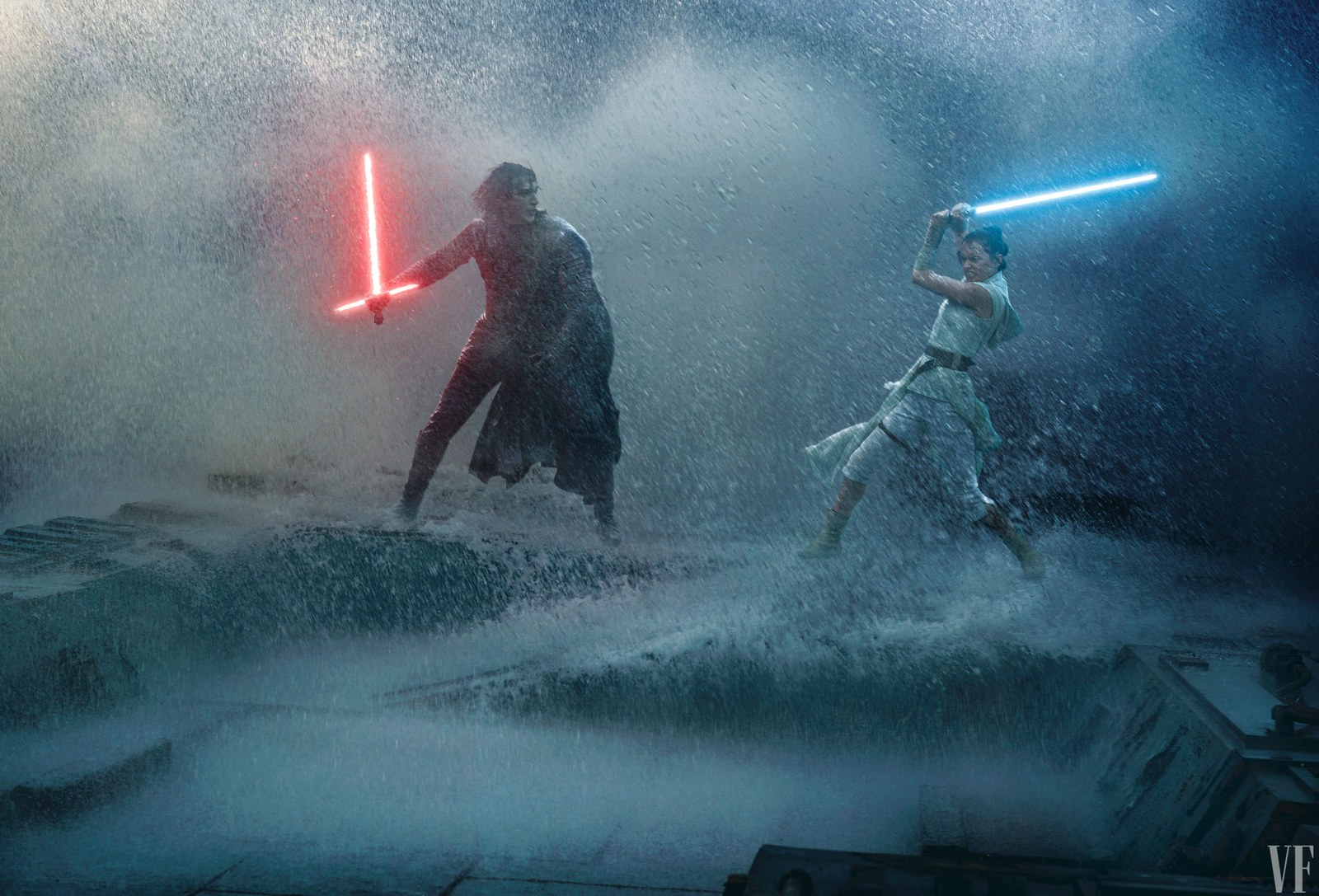This is a spoiler-free review of Star Wars: The Rise of Skywalker — twists and turns are not revealed, surprise cameos are not mentioned, etc. But proceed at your own risk anyway…
“Let the past die. Kill it if you have to.” Kylo Ren, The Last Jedi
Rian Johnson understood that for Star Wars to live, Star Wars must first die. That was his philosophy. That was the Gita in which he stood atop of while meticulously painting every frame. But killing the past didn’t mean denigrating it (many will argue otherwise), rather it meant delicately deconstructing and examining the legacy of Star Wars and the legends that reside in the galaxy — a galaxy that for years have oddly felt so small. It meant paying close attention to the lessons of the past without losing focus on the present, the new crop of characters, their psychology, their journey.
Johnson maintained the magical essence of Star Wars without conforming to the formula of Star Wars. He may have driven an unholy wedge through the fandom, but he also shattered the large, rusty shackles that were tightly clamped around the ankles of this franchise (I mean, The Force Awakens, as great as it is, is just a remix of A New Hope.) And for the first time, in a long time, Star Wars was free. Free to become whatever it wanted to be. The ground wasn’t just broken, it was obliterated. A new path was formed for the next director to journey on and craft a finale that is bold, that is brazen, that is new, that is respectful to the past without being beholden to it.
So what does JJ Abrams do?
He gets on his knees, picks up the pieces of the shattered iron, rebuilds the chains (at one point we see Kylo Ren rebuild his smashed mask), straps it around his ankles and enslaves himself, the characters, universe and audience along with him. Star Wars: The Rise of Skywalker is a frustrating final chapter, one whose skeleton is feeble and made out of nothing but nostalgic candy, whose flesh is see through, blood is thin and whose heart doesn’t pound like the drums at the back of Dragon boats but whimpers softly.

THE EMPEROR IS BACK.
Why, I wonder, was Palpatine’s inclusion in the film shrouded in so much mystery and intrigue when his presence in the film itself is void of those elements. The opening crawl casually tells us — as if informing that it’s snowing in the Artic or that water is wet — that Emperor Palpatine is back and up to no good. Kylo Ren meets him in a very early scene (after a glorious action set piece) in which Palpatine offhandedly says he’s been the asshole behind everything all along — Snoke, The First Order, the 1MDB scandal.
We move on swiftly.
A couple of scenes later, the protagonists learn of his return as well. Weirdly enough, they react almost nonchalantly. Weirder: Leia (RIP Carie Fisher) says something along the lines of, “Yeah, I’ve always known.” It was at this point when I raised my left eyebrow. A lot of what we learn in the first act comes in the form of bland exposition, sometimes simplistic, sometimes contrived, always lacking in tension and drama. Palpatine, who’s more powerful than he’s ever been, has been working in the shadows. He now has a Sith army. He wants the former Ben Solo to join him. The good guys must stop the evil megalomaniac and end the war once and for all.
The sequel trilogy did not need Palpatine. With Snoke dead and Kylo Ren over the edge (he murdered his father, contemplated killing his mother and indirectly caused the death of Luke Skywalker), the door was wide open for the unmasked, unhinged and unchained master of the Knights of Ren to become the primary antagonist and lead the First Order ruthlessly against the thinning band of Resistance. But this is a film that’s obsessed with what’s in its rearview mirror.
So, we get Palpatine.
But if we’re going to fight a battle that’s already been fought against a villain already once defeated, why not reintroduce said villain in a manner that’s poetic or prophetic akin to Voldemort in Goblet of Fire? Here, Palpatine’s integration into the narrative feels forced and — to use his terminology — unnatural. Worst of all, he’s generic. Written like a one-dimensional robot in a Michael Bay Transformers film, he’s sort of just there, cackling away, using big words like “destroy” and “new Empire” without the temperature and gravity to back em up. At one point, he even shoots a bolt of SUPER LIGHTNING into the sky while twisting his proverbial moustache.

Rey is another character who has been made a prisoner to the past. I can’t decide what’s more bothersome: The fact that the new element JJ Abrams and co-writer Chris Terrio injects into her character dissolves a beautiful and thematically powerful story beat introduced in The Last Jedi or that it’s written and executed in such an inorganic and ineffective manner that had many of us going “oh well” instead of “oh wow!” Abrams genuinely is better at designing puzzles than piecing them together.
What becomes blatantly obvious as the film lumbered along, oftentimes choppily, is that JJ Abrams desperately wants to tell the story that he had in his mind while penning The Force Awakens. Whatever it takes. Even if the revelations aren’t going to make sense. Even if it means pushing characters around inorganically. Even if he has to wrestle The Last Jedi to the ground.
Take Kylo Ren, for instance, a gem of a character created by Abrams himself (and TFA co-writer Lawrence Kasdan). When we first meet him, he’s a total effing badass. He had a cool mask, a terrorizing voice and could stop a blaster shot mid-air. But what lied underneath the pizzazz and theatrics was a conflicted, temperamental, Vader-obsessed fanboy, whose fiery jagged laser sword matched his barbed-wire personality. Ingenious! This gift of a character was nurtured and allowed to bloom in a profound manner in The Last Jedi. He was laid bare on a surgical table, carefully dissected and examined. We understood him. Understood why he ventured into the dark side and became Kylo Ren. We felt his pain, his confusion, his anger. And the killing of Supreme Leader Snoke made him the most interesting villain in all of Star Wars.
In The Rise of Skywalker, he fixes his mask and puts it back on for one reason and one reason alone: This is more of a sequel to The Force Awakens (at least in spirit), than it is to The Last Jedi. He’s back to worshipping his grandfather’s mask too. Yes, the battle for his soul between the light side and the dark forms one of the central plots of the film, but it’s written so haphazardly by JJ Abrams and Chris Terrio, that almost none of it resonates emotionally. His journey — heck, everybody’s journey — feels less like an arc and more like fragmented pieces, tied together with exposition, lacking a sense of controlled gradual escalation that leads to a dramatically fulfilling moment.

A lot of it boils down to the writing. In The Force Awakens, Abrams had Lawrence Kasdan (The Empire Strikes Back) by his side. The narrative was clean and the characters were fleshed out with wonderfully shaped arcs. Terrio, on the other hand, penned Batman V Superman, another rhythmless, choppy film packed with bland expository lines, head-scratching character motivations and an incredibly crappy bad guy.
It doesn’t help that the film is drenched with fan-service. Nostalgia, when done right, like in the case of Avengers: Endgame has the power to evoke a deep emotional response, especially from those of us who have journeyed along with the characters throughout the years. In Star Wars: The Rise of Skywalker, though, a lot of these moments feel augmented, as if made in a factory and shoved into the film at random spots throughout, ticking all the Reddit fan-fic boxes along the way, without a care in the world for story or structure. There is a scene with Leia (which I won’t spoil, of course) that’s so out of place and unnecessary, it may as well have been a teaser to a new book or comic in the extended canon.
Look, I don’t mean for this review to sound like Star Wars: The Rise of Skywalker is the most bitchin movie of the year. Because it’s not. Continuing the trend of the sequel trilogy, TROS is, aesthetically speaking, beautiful. A lot of the frames (JJ Abrams’ frequent collaborator Dan Mindel is back handling the camera) look like paintings that belong on the walls of pipe-smoking art collectors, though, admittedly, they won’t leave as lasting an impression as some of the stunning images from TFA and TLJ.
The action sequences are always glorious to behold, whether in space (there’s a scene where Poe does something with the Falcon called Lightspeed skipping that’s genuinely one of the best moments of pure visual ecstasies all year) or on the ground (the lightsaber battle between Kylo Ren and Rey is pretty awesome — I love how JJ Abrams doesn’t infuse it with an epic John Williams score, but uses silence to convey a sense of tension and peril). Speaking of, John Williams is once again furnace hot with his tracks, even if most of the great ones you hear in this film are blasts from the past.
Almost every scene where Rey and Kylo Ren connect through the Force and communicate across space is fantastic, if not for the writing then for Adam Driver and Daisy Ridley’s irreplicable raw chemistry. Just be careful what you wish for with these two.
That sentiment stretches across all the other actors as well — from the old guard like Billy Dee Williams, the new bunch like Oscar Isaac and John Boyega to the newnew members like Keri Russell and Naomi Ackie — all of whom are charming and work well together, making all their mini-adventures they embark on a delight to watch. (Keep an eye out for Isaac’s Poe and Russell’s Zorii. They’ve got a sexy couple of scenes.)

All of these elements come together stylishly to distract you from the grossly disappointing story. To a certain extent, it works. Star Wars: The Rise of Skywalker is a fairly entertaining picture from start to finish — a safe and meek bit of fun (and for that reason, it will be getting a positive rating from me).
But the best Star Wars films have the ability to do more than just keep you glued to your seat for two hours. They have the ability to reach into your soul, to captivate you, to move you emotionally, to leave you exhausted and elated. To leave your cheeks sticky with dried-up tears from three scenes ago. The best Star Wars films can inspire you. The Rise of Skywalker accomplishes none of that.
It just leaves you feeling kind of defeated.
Star Wars: The Rise of Skywalker is currently playing in Malaysian cinemas.
Follow us on Instagram, Facebook, Twitter or Telegram for more updates and breaking news.



